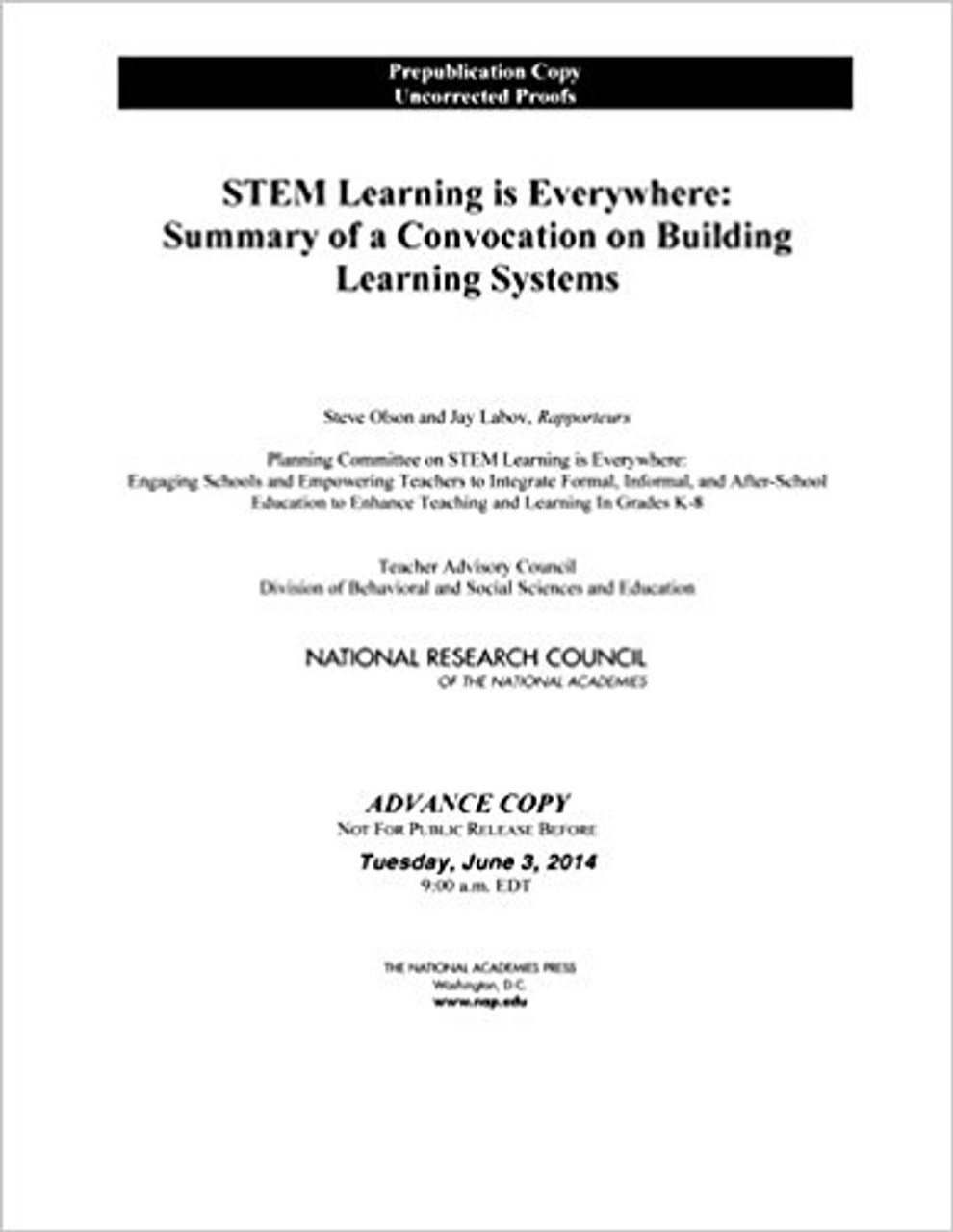Product Description
Science, technology, engineering, and mathematics (STEM) permeate the modern world. The jobs people do, the foods they eat, the vehicles in which they travel, the information they receive, the medicines they take, and many other facets of modern life are constantly changing as STEM knowledge steadily accumulates. Yet STEM education in the United States, despite the importance of these subjects, is consistently falling short. Many students are not graduating from high school with the knowledge and capacities they will need to pursue STEM careers or understand STEM-related issues in the workforce or in their roles as citizens. For decades, efforts to improve STEM education have focused largely on the formal education system. Learning standards for STEM subjects have been developed, teachers have participated in STEM-related professional development, and assessments of various kinds have sought to measure STEM learning. But students do not learn about STEM subjects just in school. Much STEM learning occurs out of school--in organized activities such as afterschool and summer programs, in institutions such as museums and zoos, from the things students watch or read on television and online, and during interactions with peers, parents, mentors, and role models.Product Videos
Custom Field
Author National Research Council
Binding Paperback
Language English
Book Type Professional
Copyright 2014







